#mohair fabric
Photo

Suits Can Be So Much Fun: 1960 Suit at Fashion and Nature
When many people think of suits, they think boring. But women’s suits from the early to late 20th Century were sometimes tons of fun. They came in all kinds of styles and fabrics, always being an important part of women’s wardrobes for office work and city outings. During the 1950s, they were often fitted through the waist, just like dresses were. You see here a simple, unfitted shape which was the early 1960s fashion and a straight skirt just below the knee.
This bright pink suit dates to 1960 according to the curators of Fashion and Nature at the Grand Rapids Public Museum. It has no label apparently which I find interesting. Is the label simply missing or was this custom made for someone? We do know it is made of mohair fabric which comes from the fibers of the angora goat which means it is soft and fuzzy. Mohair sweaters became an important fashion in sweaters in the late 1950s and early 1960s, so the fiber was trending. And the matching trim is actual fox fur which signaled luxury then.
The result is a stunningly playful suit perfect for an evening party. The shape itself is simple, but the color and the trim turn it into something dramatic. Keep this in mind as you consider making evening wear. A suit pattern, matched with the right fabric, could make something wonderful. So says a woman who is pondering making a suit jacket out of an old gold wool and silk suiting that has spent far too long in her sewing room.
For more on the Grand Rapids exhibition, go here: https://www.grpm.org/fashion-and-nature/
#fashion and nature#grand rapids public museum#1960s fashions#1950s fashions#women's suits#vintage womenswear#vintage womens suits#vintage fashion#costume history#dress history#fashion history#mohair#mohair fabric#pink#suits#costume history exhibition#fashion history exhibition#dress history exhibition
26 notes
·
View notes
Photo

Mudroom Miami
Inspiration for a large transitional marble floor vestibule remodel with beige walls
0 notes
Text
New York Bedroom Master

Mid-sized transitional master bedroom remodel ideas with beige walls and dark wood floors.
0 notes
Photo

Transitional Living Room - Living Room
#Inspiration for a large transitional formal and open concept light wood floor living room remodel with beige walls sophisticated look#mohair fabric#living room#silk rug#wallpaper#velvet fabric
0 notes
Photo

Guest - Transitional Bedroom
#An illustration of a medium-sized transitional guest bedroom with a dark wood floor and gray walls. wallcovering#luxury#bedroom#mohair fabric#sophisticated look
0 notes
Text

Snap dragon III, Maria Szakats, mohair on canvas, 20,5 × 28 cm, 2023.
Photo : Grégory Copitet
#exhibition#installation#textile#fabric#grass#margin#frame#orange#green#contemporary art#mohair#Maria Szakats#galeriechloesalgado
16 notes
·
View notes
Text

watching a yarn video and googling what mohair yarn is and getting jump scared by "as with all animal-derived textiles ... involves suffering and slaughter" peta on the front fucking page of google??? ugh.
#go AWAY you dumb fucking PEOPLE#suffering and slaughter. good lord. maybe talk about the plastic fabrics adding microplastics to the environment and harming animals.#anyway probably will avoid mohair for a bit id probably get super annoyed w it lol#ollie rambles
6 notes
·
View notes
Photo

#wool#cashmere#silk#mohair#angora#wool sweater#cashmere sweater#jumper#sweater#pullover#turtleneck#cable sweater#cable knit#merino wool#lambs wool#alpaca#natural fabrics#animal fabric#self sufficiency#autumn#autumn aesthetic#winter#winter aesthetic#october#november#december#christmas sweater#warm clothing#toasty#sweater weather
37 notes
·
View notes
Text
Some time ago I was wondering at work, why isn't there like faux fur made out of natural materials. Now I watched a winter hat video where the person has just that! I was like aw yeah! Sadly the company is outside of EU so a hassle to order. And I was like, surely other people would've had that idea too. But how the hell you google for something like that without the results being full of just plastic fur.
#personal#Morgan Donner's winter hat video if someone's interested#the faux fur is available in alpaca or mohair#I was thinking just that- if you can weave fur fabric out of plastic how come not other materials..
2 notes
·
View notes
Photo
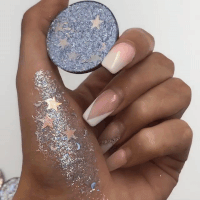


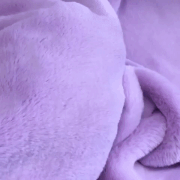



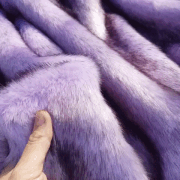
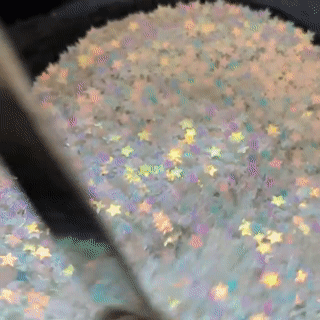

Bright Heart Raccoon Stimboard with stars and fluffy things for anon!
⭐ | ⭐ | ⭐
⭐ | 💜 | ⭐
⭐ | ⭐ | ⭐
#bright heart raccoon#stimboard#care bears#soft#fabric#faux fur#mohair#slime#glitter#stones#makeup#our stuff
33 notes
·
View notes
Note
Where do you get your short pile fur type fabric for plushies? I've never been able to fond a decent place that doesn't make you buy like 20 yards at a time.
Which one specifically?
I'm in the UK so that's where most of my suppliers are.
The printed stuff is called "Short Velvet" and I get it printed through a company called Woven Monkey.
The faux fur I use is from Mohair Bear Making Supplies, Swincraft2 on Ebay, and Linda's Wholesale on Aliexpress and this one specific website for 10mm faux fur (I don't recommend the black but the others are nice). I've also just collected a bunch over the years.
For Short Minky I recommend Hopen on Aliexpress!
54 notes
·
View notes
Text
While I'm on the topic of discussing knitwear and knitting patterns: I really wish designers would put some extra thought into the yarn choices/ recommendations for their patterns beyond "this is pretty".
Like, I know mohair is having a moment right now so everyone is using mohair in their patterns, and that's great for cozy cold weather sweaters; but if your pattern is for a floaty lightweight cottagecore-esque top for summer, maybe don't pick a mohair/silk blend? That's great for warmth, but it sounds like an absolute nightmare for hot months.
Similarly, a designer I really love just put out a pattern for a flowy drapey summer tee, and while I'm absolutely going to make it at some point, I'm absolutely not going to use the wool/silk/yak yarn they recommend, because I don't feel like breaking my budget or getting heat stroke. Instead I plan to use a wool/cotton blend; that will keep the springiness and structure of wool so it doesn't stretch all out of shape, but the cotton will provide drape and also allow the fabric to breathe. (Yak and silk are both fabulous for drape but tend to retain heat better than plant fibers.)
At this point I personally have the experience to know how to swap or substitute yarns to get the results I want, but it still leaves me scratching my head and wondering what the thought process is and also feeling bad for less experienced knitters who aren't able to do the same.
260 notes
·
View notes
Text

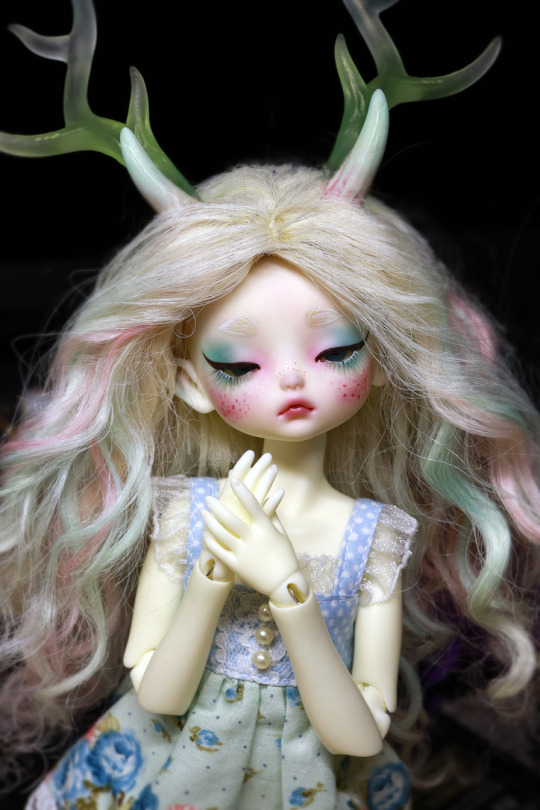

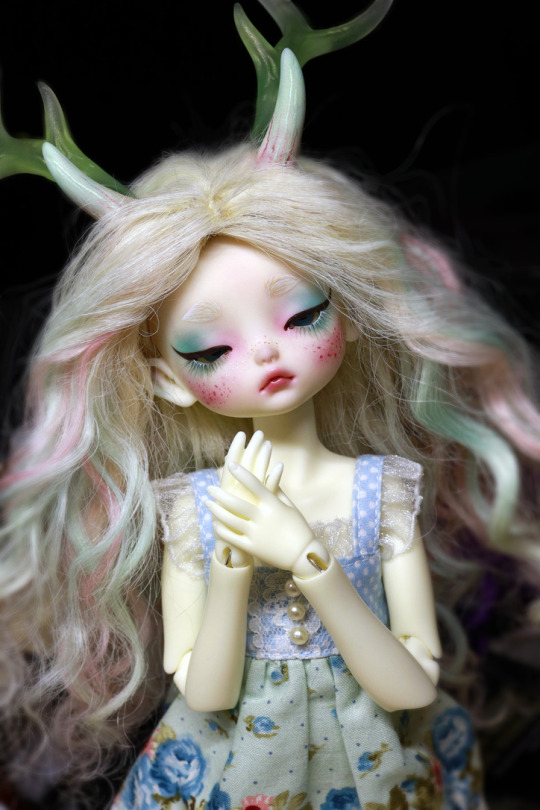
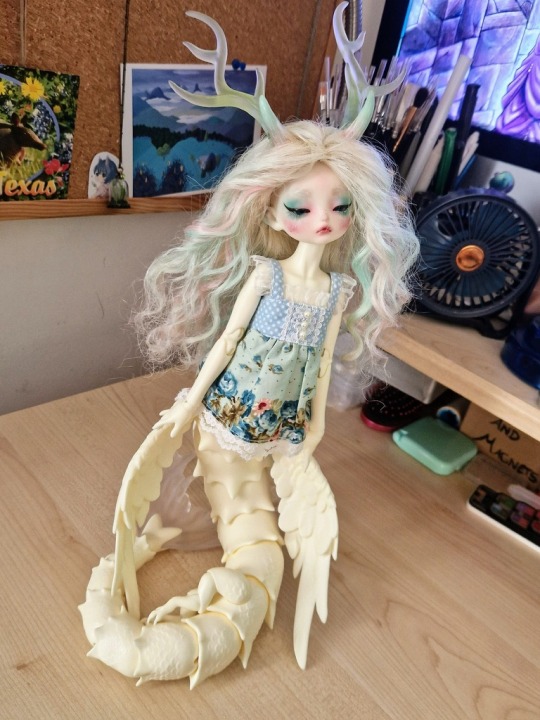
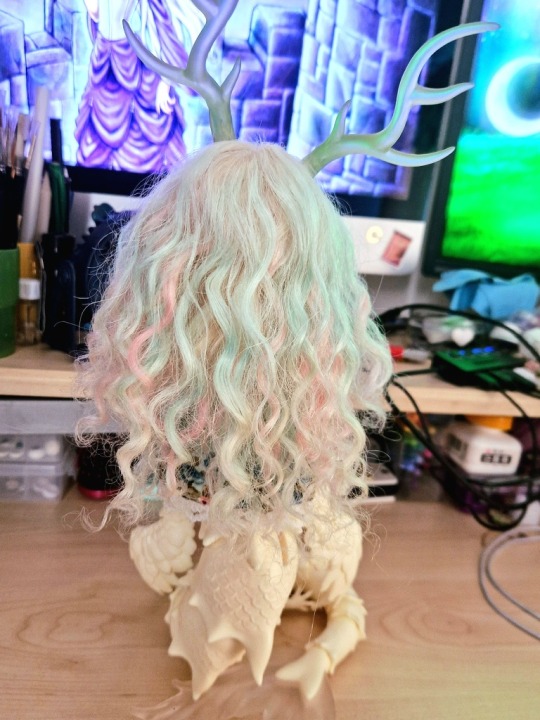
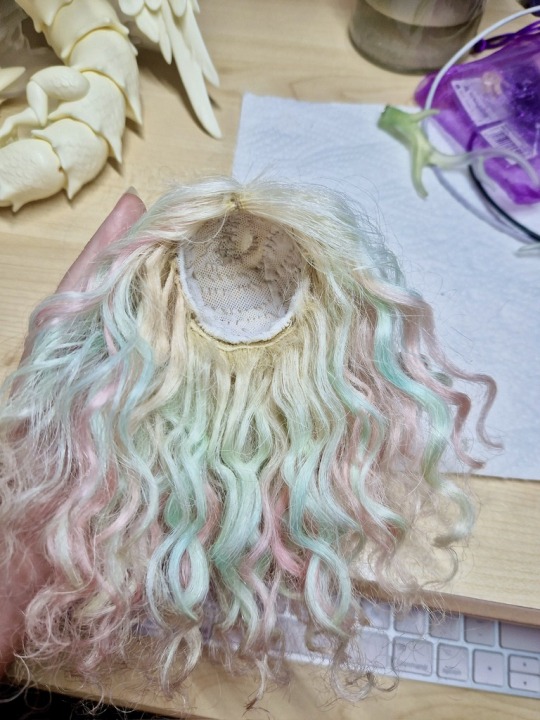
My first doll project of 2024 was to re-style Ember. I made my first sewn wig from pre-made wefts and I am happy with it!
The part is messy, but it's not bad for my first wig like this. The wig cap is fabric and I bought it years ago from Angelesque still. I sewed most of the wefts on while the cap was on her head.
With her new pastel pink and mint wig, I finally kicked myself in the butt to also redo her faceup. I opted for now applied eyelashes this time because her eyes are so narrow that you can't see them at all.


This was her previous faceup and wig. The wig always was meant to be temporary, because I don't like it that much, but it was the only one I didn't feel bad cutting holes into for her horns.
The transparent horns are magnetic, but the solid ones are not, and of course they are a very awkward position making it impossible for her to wear normal wigs. Yes, the wig I sewed has holes cut into it for her horns. It's stretchy which is the only reason it goes over the horns at all.
The what is what:
Sculpt: Dollzone Po in white skin
Eyes: unknown 12mm glass eyes
Outfit: unknown, was a gift
Wig: Mohair Fiber by LaFiabaRussa, sewing and styling by me
Faceup: me over at @izasfaceups
#bjd#abjd#ball jointed doll#bjd photography#legit bjd#dollzone#izasbjdphoto#izasfaceups#bjddoll#bjdphotography#doll#dollzone po#dragon bjd#year of the dragon#wig making#bjd wig#bjd faceup
55 notes
·
View notes
Text

Le Petit écho de la mode, no. 9, 1 mars 1896, Paris. 8. (1) Costume en drap amazone pain brûlé. (2) Costume en mohair glacé camaïeu. Ville de Paris / Bibliothèque Forney
(1) Costume en drap amazone pain brûlé. — Jupe â godets. Veste fantaisie â revers carrés. Chemisette-corsage en tissu pareil plissé. Manches d’une seule pièce. Ornements de piqûres et boutons métal.
(1) Suit in burnt bread amazon cloth. — Godet skirt. Fancy jacket with square lapels. Corsage blouse in similar pleated fabric. One-piece sleeves. Stitching ornaments and metal buttons.
Matériaux: 8 métrés tissu.
(2) Costume en mohair glacé camaïeu. — Jupe nouvelle, â 8 lés. Corsage ajusté garni d’un double pli creux et de pattes assujetties par des boutons. Ceinture ronde et col droit. Manches d’une seule couture.
(2) Suit in monochrome glossy mohair. — New skirt, 8 lengths. Fitted bodice trimmed with a double box pleat and tabs secured with buttons. Round belt and straight collar. Single-stitched sleeves.
Matériaux: 8 mètres tissu.
Employer la Fibre chamois pour les jupes et corsages.
#Le Petit écho de la mode#19th century#1890s#1896#on this day#March 1#periodical#fashion#fashion plate#description#Forney#dress#gigot#suit#collar
48 notes
·
View notes
Text
Rum and Grog the Sailor's life elixir
Rum was first served to British sailors in 1655 as a substitute for beer and brandy. Beer and water were difficult to transport because of their large volume, and it didn't take long for those in charge to realise that they needed something more sustainable for their long-distance cruises. Rum doesn't spoil, is much easier to store and has an even greater "starchiness" than beer. But rum is also stronger than beer and caused all kinds of problems both on land and on the ship. Drunkenness led to brawls, accidents and even death.

Saturday Night at Sea, by George Cruikshank, 1841
But it wasn't until 1740 that a certain Admiral Edward Vernon ordered the daily rum ration to be diluted with water and mixed with sugar and lime to get the problem under control, because he was tired of seeing his men falling out of the rigging, fighting and sometimes refusing to serve.
The resulting drink was to be served in two portions between 10 and 12 in the morning and between 4 and 6 in the afternoon under the supervision of the officer of the watch. This new drink was called "Grog", after Vernon's nickname "Old Grog". He got this name from the waterproof jacket he wore. It was made of grogram fabric - a coarse blend of silk and wool (or mohair) stiffened with rubber. It was definitely not the kind of fabric you would want to use for underwear. But back to the grog, When the rations were distributed, the boatswain would ring the ship's bell and shout "Spirits up", and the sailors would shout "Stand fast the Holy Ghost" before gulping down their glass. The glasses were kept separate from all other glasses and never washed from the inside, as it was believed that the previous glasses would stick to the side of the glass and the next glass would become even stronger.

Spirits up (x)
This method of serving not only prevented the worst excesses of drunkenness, but also prevented sailors from storing rum for illicit binge drinking, sometimes referred to by sailors as the "black mess". The Admiralty gave the final official stamp of approval for the issue of grogs in an ordinance of 1756, stipulating that citrus juices should now always be added to the grog made from rum and water to prevent scurvy. This addition of lime later led to the Americans nicknaming the sailors of the Royal Navy "Limeys". The officers, however, were still allowed to take their rum undiluted, which is why their ration was called "Neater".
But in 1823 rations were reduced from ½ a pint of rum to ¼ of a pint. To compensate for this loss and possibly to stop any potential mutiny, 2 shillings were added to the sailors monthly wage along with tea and coffee. At this time the ration was issued only once a day instead of twice and they had to wait until the evening. Petty Officers and above were still allowed their rum neat.
In 1850 the ration was halved once more, coming in at an eighth of a pint of rum, with a ratio to water of 1:3, plus meat and sugar rations increased to compensate. And for anyone that abstained of their ration, they were paid Grog Money at a rate of 1 shilling and 7 pennies per month.

The daily ration of grog (x)
In 1919 Grog Money was increased to 3 pennie per day, and then in 1937 the ratio of rum to water was reduced to 1:2
By the 20th century, the sailors’ rum tradition had lasted for over three hundred years, until Admiral Peter Hill-Norton raised concerns about the pernicious affect alcohol could have on sailors who managed complex machinery whilst under the influence. The final nail came with the invention of the breathalyzer and a British newspaper using one to demonstrate that a sailor could still be legally drunk and ‘Three sheets to the wind’ after drinking his tot ration.
The House of Commons got together to discuss this in a meeting known as ‘The Great Rum Debate’ and eventually on 31st July 1970 sailors drank their last ever tot, some bore black armbands and conducted mock funerals to bid farewell to their beloved rum ration. This day became known as Black Tot Day.
You want to make your own Navy Grog ? Well then try it:
Navy Grog (courtesy of distiller.com
1 oz light rum
1 oz dark rum
1 oz 151-proof rum
2 oz fresh orange juice
1 oz pineapple juice
Slice of orange and maraschino cherry for garnish
and here without alcohol
5 oz Fiery Jamaican Ginger Beer
1 oz Fresh Lime Juice
1 teaspoon Brown Sugar – or a 1/2 oz of Demerara Syrup
2-3 dashes Angostura Bitters
Half a spent Lime Shell
104 notes
·
View notes
Text
Camel part 3: the pvc pipe skeleton is assembled inside the body while it is being stuffed. The opening in the stomach is sewn closed and black glass eyes are sewn into his head. He will also get felt eyelids, which I have currently pinned in place, mohair eyebrows, and extra fabric sewn to his legs to mimic the wrinkled knees. I could not do this in the base skin as the fabric needed to be firmly stuffed to aid in hiding the armature.



#raggedy ann#raggedy ann and andy#raggedy andy#ooak dolls#dollartistsofinstagram#classictoys#dollartist#raggedy ann revival effort#raggedyannandandy#rag dolly
33 notes
·
View notes